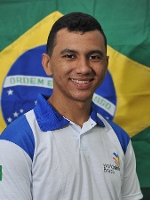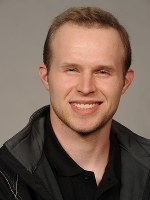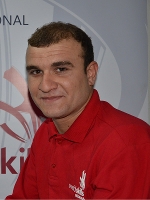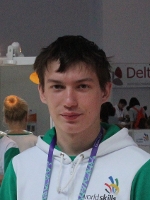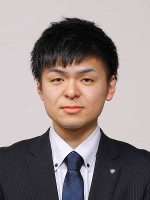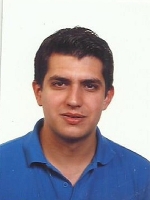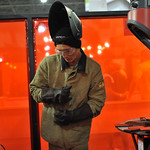Welding
Skill Explained
A welder prepares and joins a range of metals of various gauges using electrical and electrical/gas shielded processes. A welder needs to be able to interpret engineering working drawings, standards and symbols correctly translate these requirements into accurate structures and products.
Welders need to have a thorough knowledge and understanding of safe working procedures and personal protection equipment. They need to gain specific knowledge of a wide range of welding equipment and processes as well as a good working knowledge of metallurgy. They need to be familiar with electricity and electrical processes.
Welders join sections, pipe and plate and fabricate large and small pressure vessels. A welder prepares, assembles and joins a wide range of metals and metal alloys using various welding processes including MMAW (manual metal arc welding), MAGSW (metal arc gas shielded welding), TAGSW (Tungsten arc gas shielded welding) gas welding and cutting. They use gas, electrical, and gas shielded electrical processes to join and cut a wide range of materials. They must be able to choose and operate the correct equipment, process and methodology depending upon the material being joined.
Welders may be engaged in using thermal cutting processes and should be able to identify and follow the correct preparation for joining as applied to the type, thickness and intended use of the joint. They use grinding and cutting equipment to prepare and finish welded joints. Modern methods of joining, as well as those noted above, include mechanized processes such as submerged arc, plasma arc, stud welding and laser welding.
A welder can work in a unit or factory which produces fabrications and/or structures for industries as diverse as civil engineering, mechanical engineering, transport, marine engineering, and construction, service and leisure industries. Welders also work on site preparation, construction, and the repair and maintenance of structures within the areas described above. A welder can work in many locations and situations, ranging from a bench in a factory, to shipyards, power stations and off-shore structures in order to inspect and repair gas or oil rig terminals. Welders also work in engineering, construction, power generating and petro-chemical plants. The working environment may include hazardous settings such as the open sea.
The modern welder may specialize in one or a number of welding processes and environments. He or she may also be asked to work in exotic alloys such as duplex stainless steels and cupronickels. The quality of the welding will vary according to cost and function, with the most skilled welders depended upon to carry out the finest work where faults and failure may have the most serious consequences in terms of cost, safety and environmental damage.
What the Competitors do at the Competition
The Competitor will be judged on their ability to:
- Weld Butt and fillet welds of plates, and pipes in all working positions with seams of different angles of inclination and rotation to be completed within a given time frame. Weldments will be non-destructively tested to specific assessment criteria and scored accordingly. Welding positions terminology shall be to both ISO2553 and AWS A3.0/A2.4.
Competitors
Majid ALMaazmi
United Arab Emirates
Jackielyson Alves
Brazil
Raphaël BIGAUD
France
Andrew Cardin
United States of America
CHUN-WEI CHANG
Chinese Taipei
Malkhazi Chipchiuri
Georgia
Leroy De Ryck
Belgium
Sergey Dubenskiy
Russia
Roger Gemperle
Switzerland
Davoud Ghajezadeh
Iran
Thomas Käferböck
Austria
Jimmie Karlsson
Sweden
Jin Seok Kim
Korea
Kukuh Kiswanto
Indonesia
Takumi Koyama
Japan
Gantsooj Lkhagvasuren
Mongolia
Edwing Yohany Martínez Morales
Colombia
Kallon McVicar
Australia
Nurlybek Mukhamediyarov
Kazakhstan
Nurlybek Mukhamediyarov
Kazakhstan
Owen Murphy
Ireland
Sachin Bhojling Narale
India
Peter Panyi
Hungary
Luís Pereira
Portugal
Suparat Rattanapan
Thailand
Muhammad Dzulhelme Razali
Malaysia
Richard Roolvink
Netherlands
Rubén SANCHO
Spain
Stacy Smyth
New Zealand
Tommy St-Martin
Canada
Pekka Sumiloff
Finland
Alf Sundal
Norway
Reece Taylor
United Kingdom
Dang Duy Tuan
Vietnam
Jaco van Deventer
South Africa
Marven Vöge
Germany
Zhengchao Zeng
China
Experts

Wolfgang Ahl
Switzerland

Markus Aichinger
Austria

Ferenc Benus
Hungary

Patrick Bouvard
France

Chih-Peng Chen
Chinese Taipei

David Cleghorn
United Kingdom

Raphaël Colle
Belgium

Maurice Collins
Ireland

Paul Condran
Australia

Ray Connolly
United States of America

Akram Dwairi
United Arab Emirates

Julio Cesar Fernandes
Brazil

Jorge Gonzalez
Chile

Pasi Hallikas
Finland

Ken Heather
Canada

Leif Ottar Heimro
Norway

Hans-Jörg Herold
Germany

Koji Horikawa
Japan

Syahrudin Kaliky
Indonesia

Vishwesh Kulshrestha
India

Alireza Lahooti Narmighi
Iran

Viktor Laskin
Russia

Hoo Rong Lee
Korea

Edwin Mabelis
Netherlands

Ismael MARTINEZ
Spain

Etienne Nell
South Africa
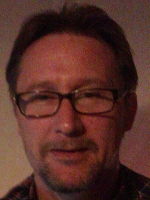
Jörgen Persson
Sweden

Bovornchok Poopat
Thailand
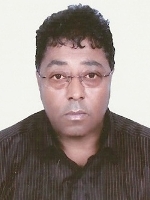
Mokhtar Sahbani
Oman

Alvaro Santos
Portugal

Lee Kab Seung
Vietnam

Brian Simpson
New Zealand

Batsaikhan Sodnom
Mongolia
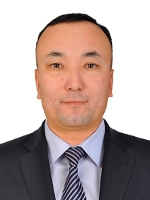
Nurlan Suirgulov
Kazakhstan

Darus Taib
Malaysia

Elver Valencia
Colombia

Gabriel Vatitadze
Georgia

Youquan Zhang
China
Videos
A New Look at Skills
Autodesk Publisher 3D models*
Download for desktop
Download for mobile
Autodesk Inventor Data Sets**
* Open the 3D models on desktop with Autodesk Inventor Publisher. On mobile download the Autodesk Inventor Publisher Mobile Viewer app (iOS or Android).
** Students and Teachers can download Autodesk Inventor software via the Autodesk Student Community, Educational Institutions via Autodesk Academic Resource Centre (ARC).



